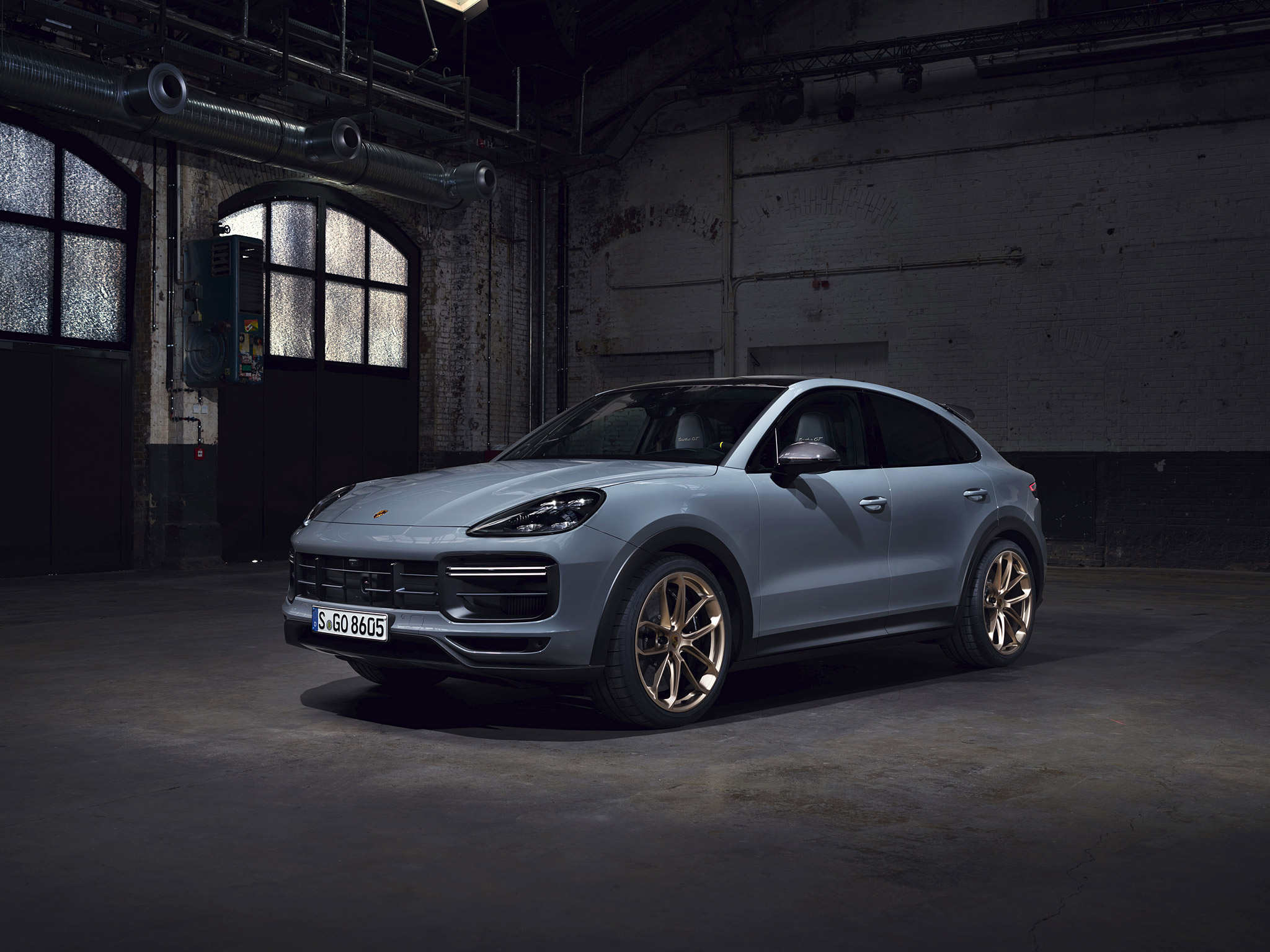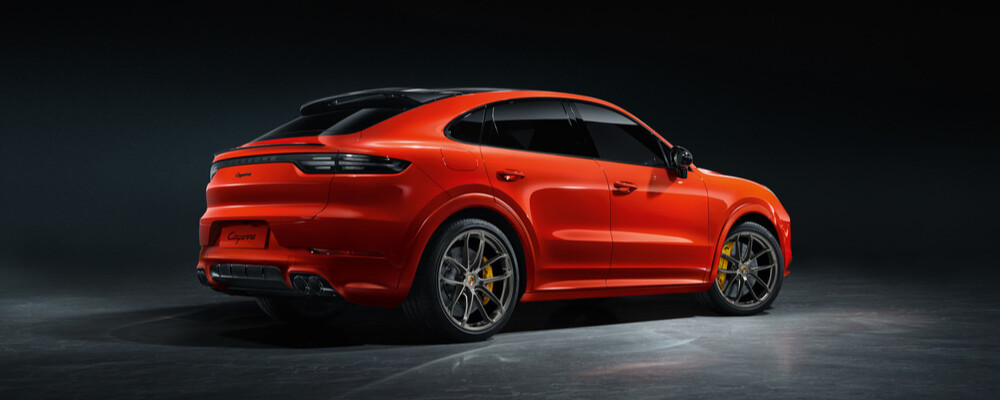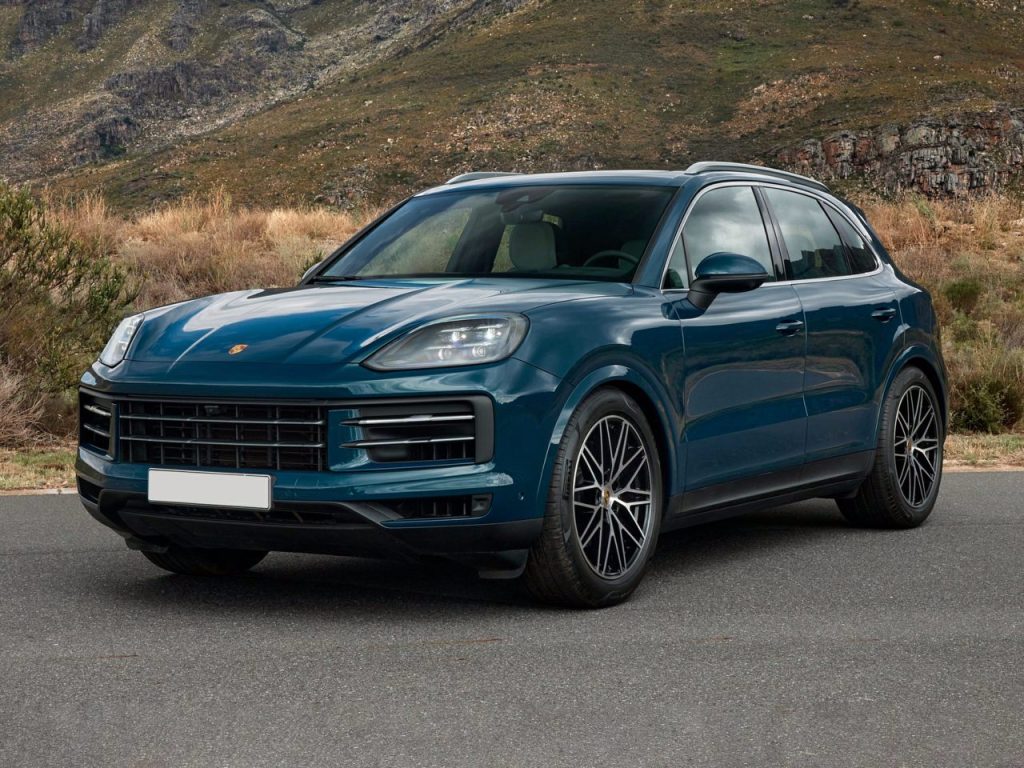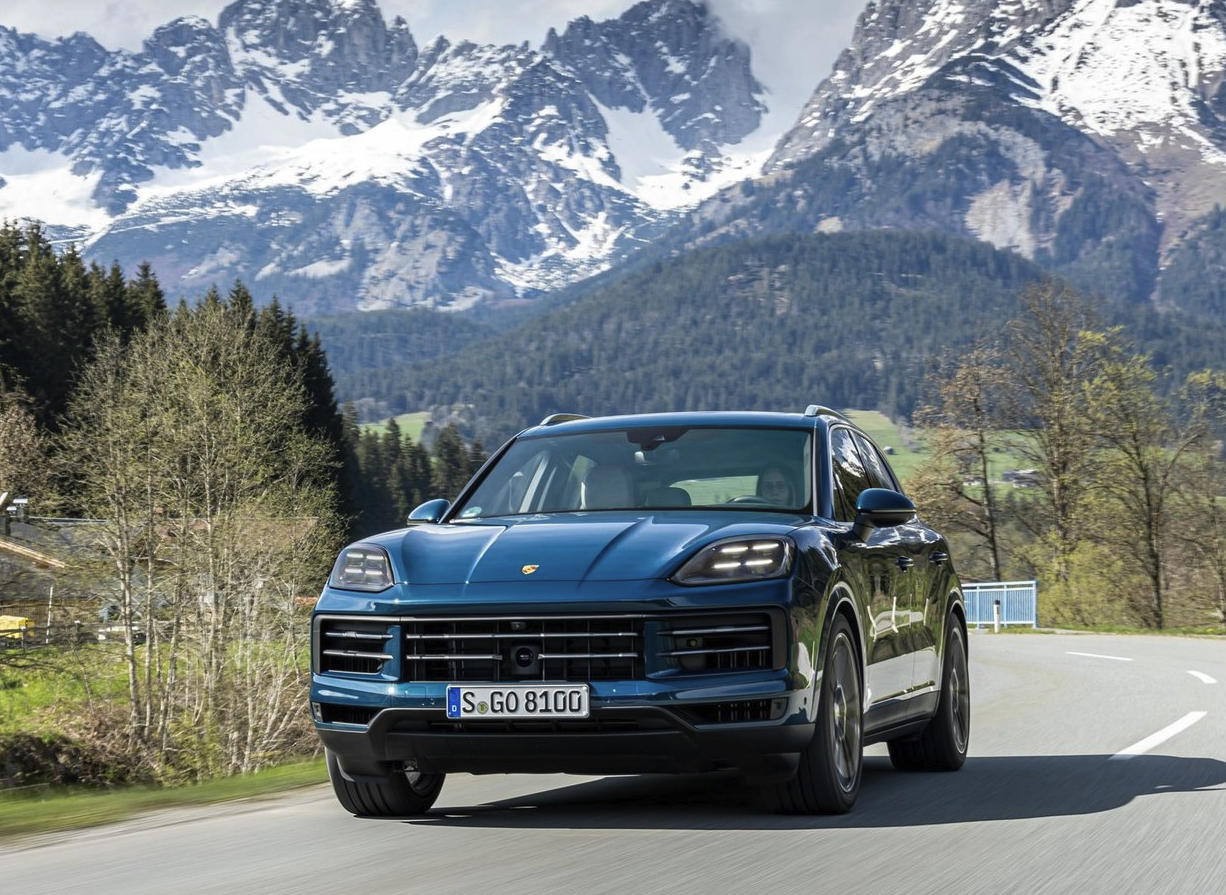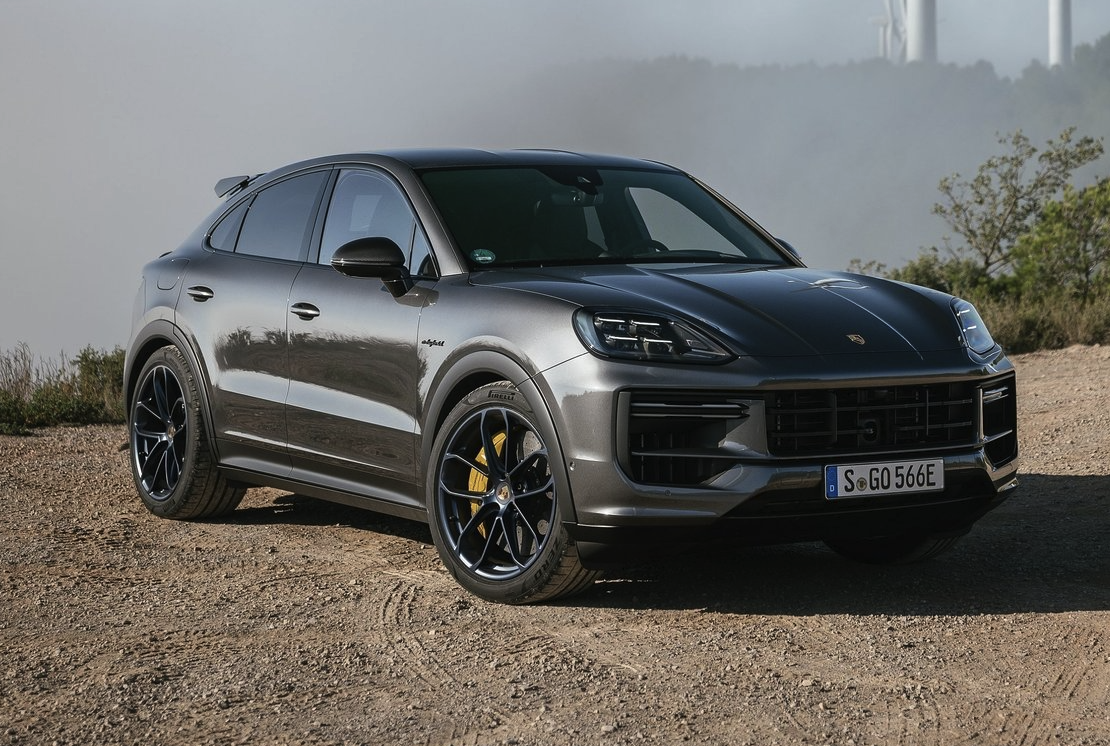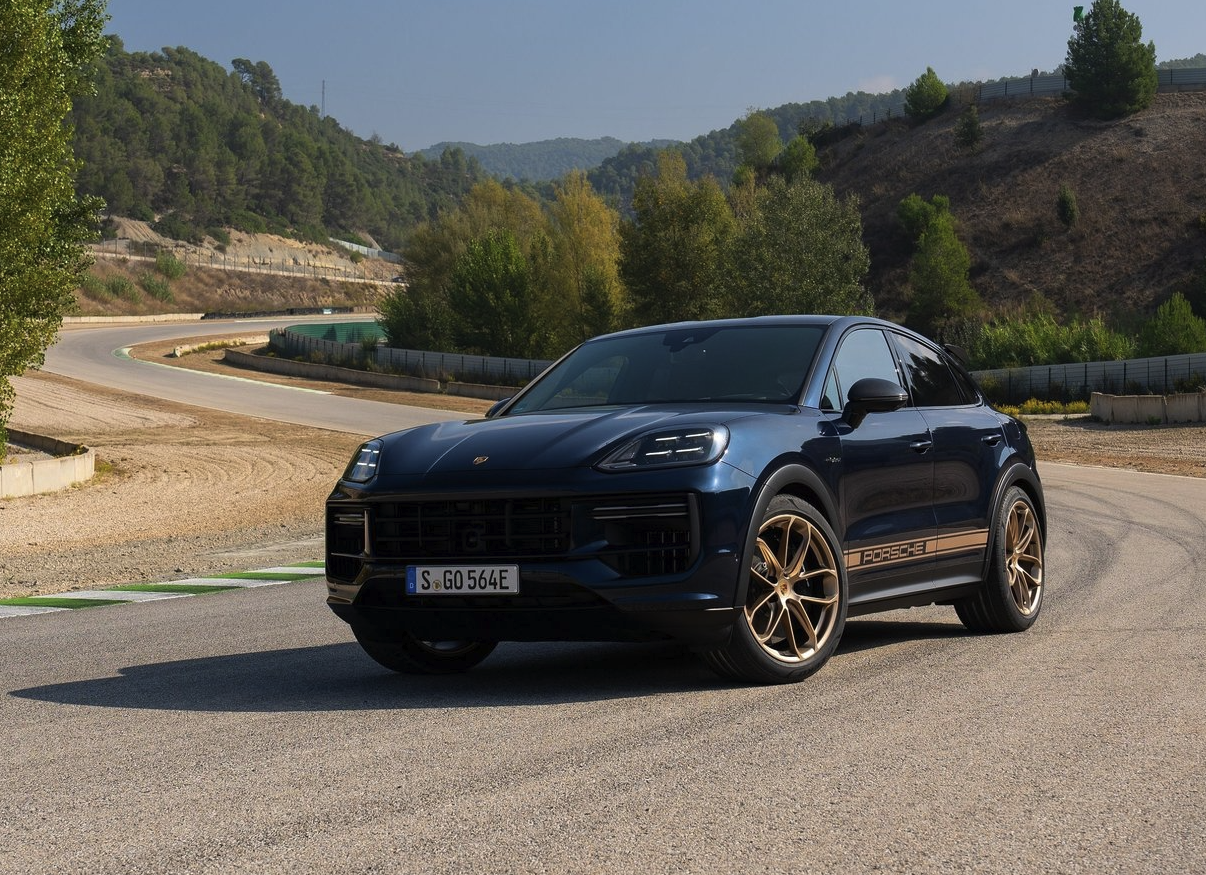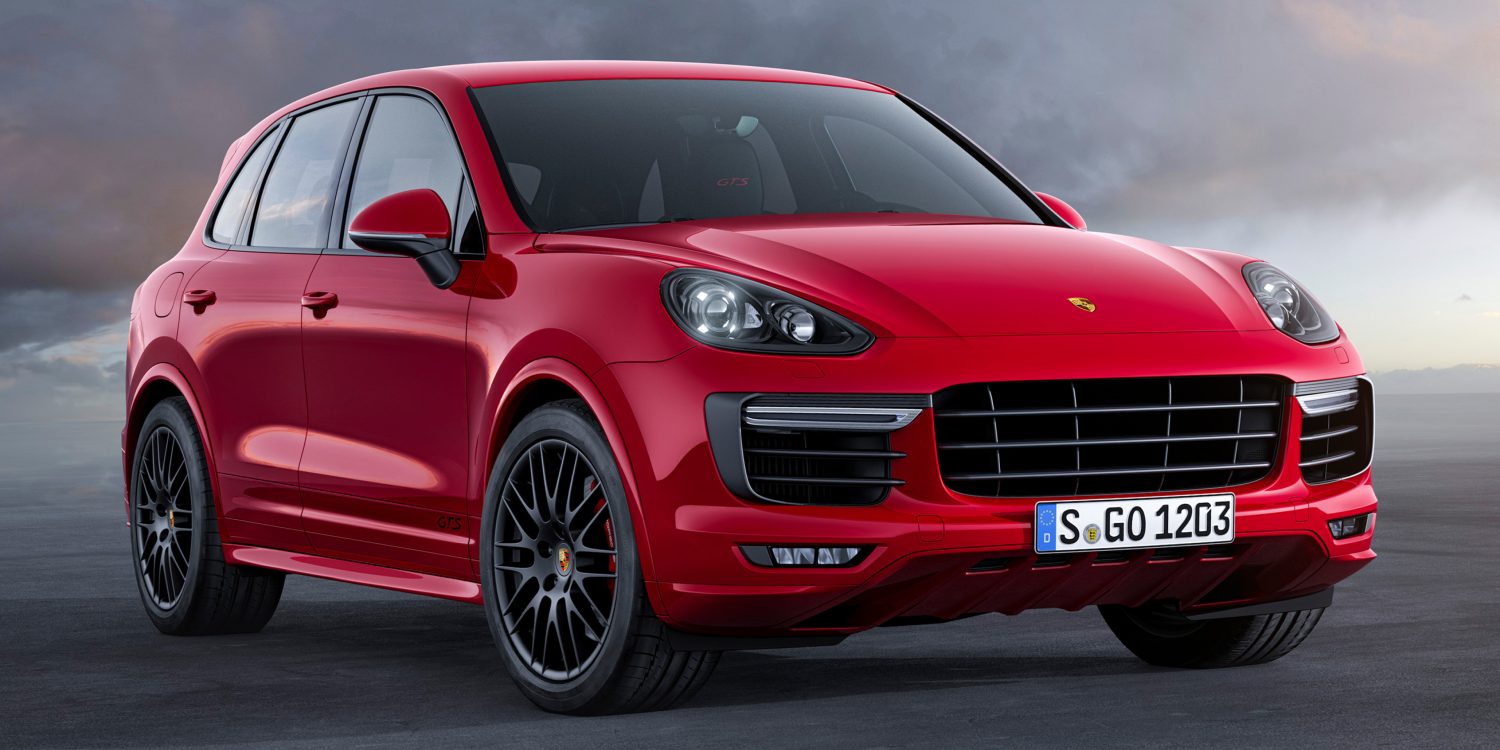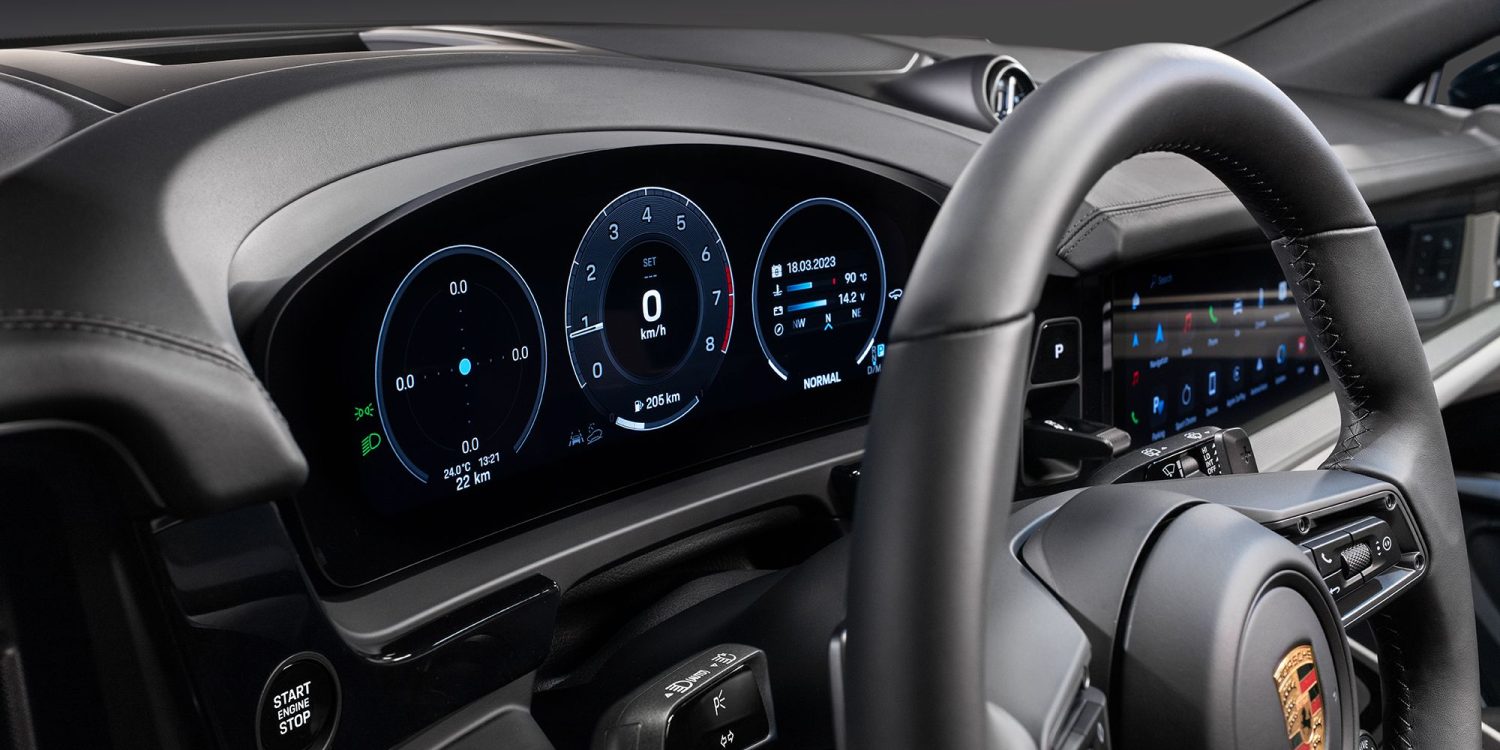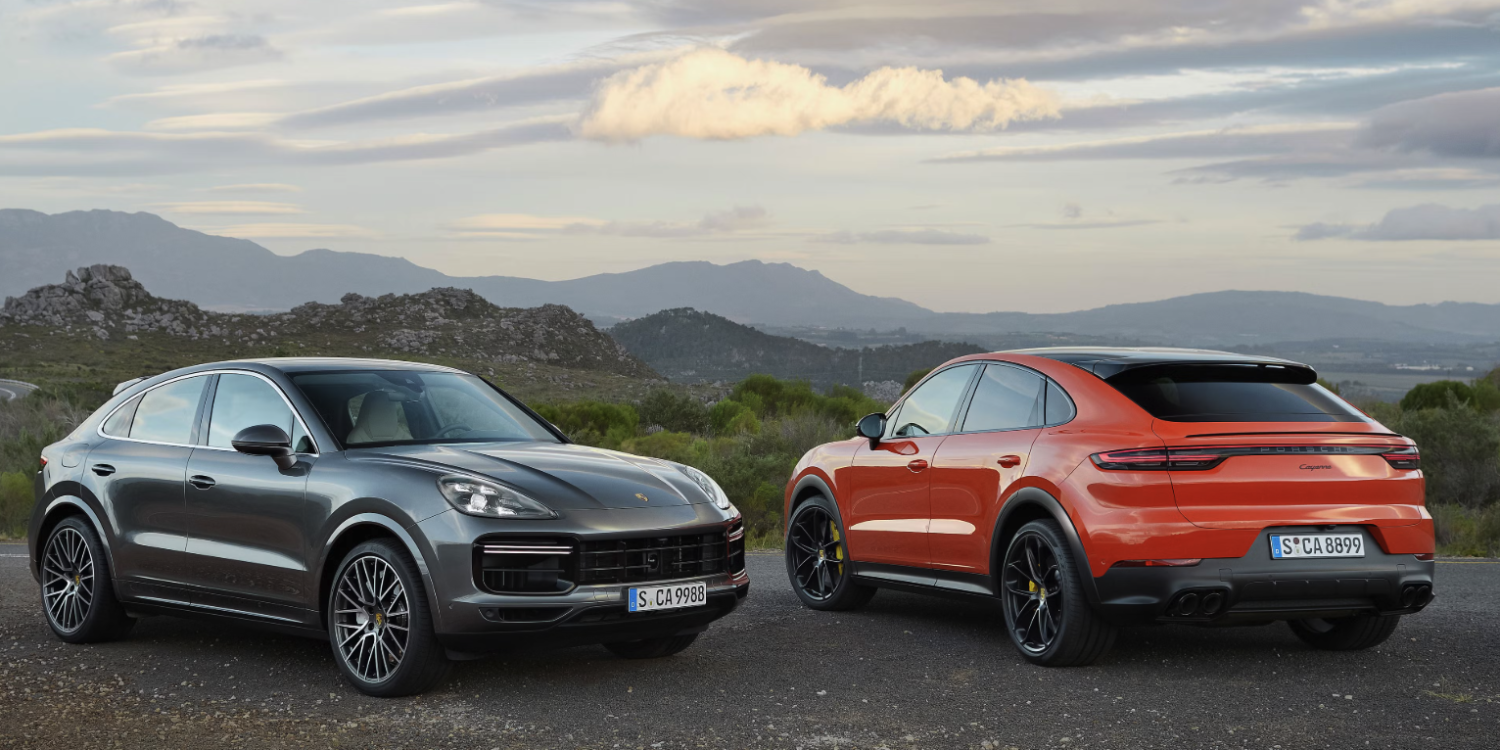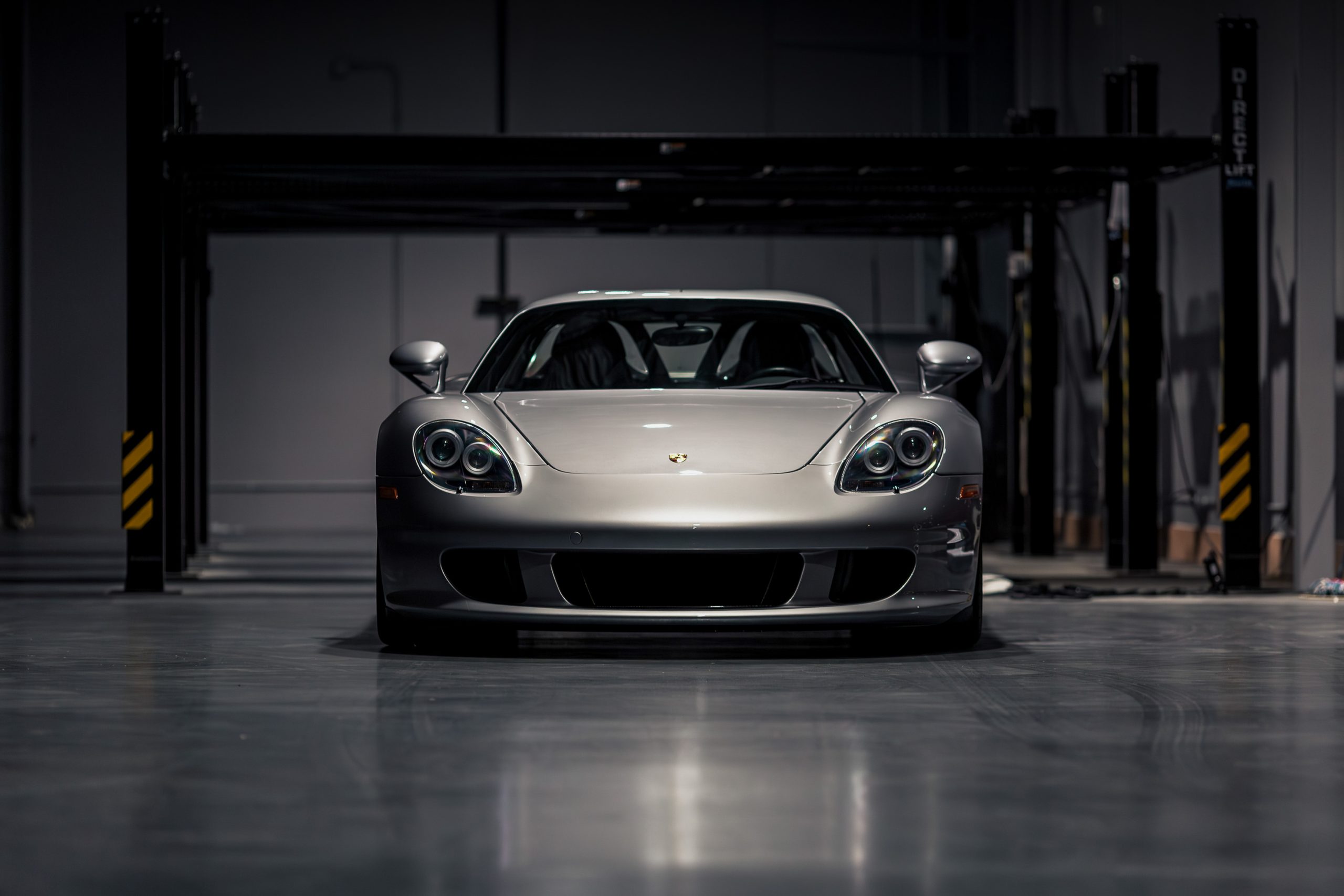3rd Generation Porsche Cayenne Buyer's Guide
Buying a third generation Cayenne? Our Guide Covers Key Models, Potential Issues, Values, Tips & More.
PLEASE NOTE: For this post, we are focused on buying a used Cayenne. Since the current Cayenne is still on sale, you should check out our current New Cayenne buying guide.
The third-generation Porsche Cayenne (9Y0, 2019–present) represents the most advanced and refined evolution of Porsche’s luxury performance SUV to date. Designed from the ground up with cutting-edge tech, sharper dynamics, and an even more luxurious interior, this generation takes everything that worked in the 958 and pushes it further. Built on the VW Group’s MLB Evo platform, it’s lighter, more efficient, and more capable—both on the road and in terms of tech. For those seeking a used Cayenne that feels thoroughly modern, the 9Y0 is the one to look for.
Whether you’re considering a Cayenne S with twin-turbo V6 punch, the balanced and efficient base V6, or going all-in with the thrilling Cayenne GTS or Turbo, the third-gen Cayenne offers something for every kind of driver. Porsche also introduced the E-Hybrid and Turbo S E-Hybrid powertrains during this generation, offering a high-tech plug-in hybrid solution that doesn’t compromise on power. What’s especially appealing in the used market is the range of well-optioned 2019–2022 models—many of which now provide excellent value compared to their new-car sticker prices.
In this Third-Generation Porsche Cayenne Buyer’s Guide, we’ll help you make an informed purchase by breaking down key models, common issues to watch for, pricing trends, expert buying tips, and long-term expectations. We focus solely on used Cayennes, helping you navigate the best trims, options, and years for reliability, performance, and value. Whether you're shopping for a lightly used family-friendly SUV or a power-packed luxury crossover with Porsche pedigree, the 9Y0 Cayenne should absolutely be on your radar.
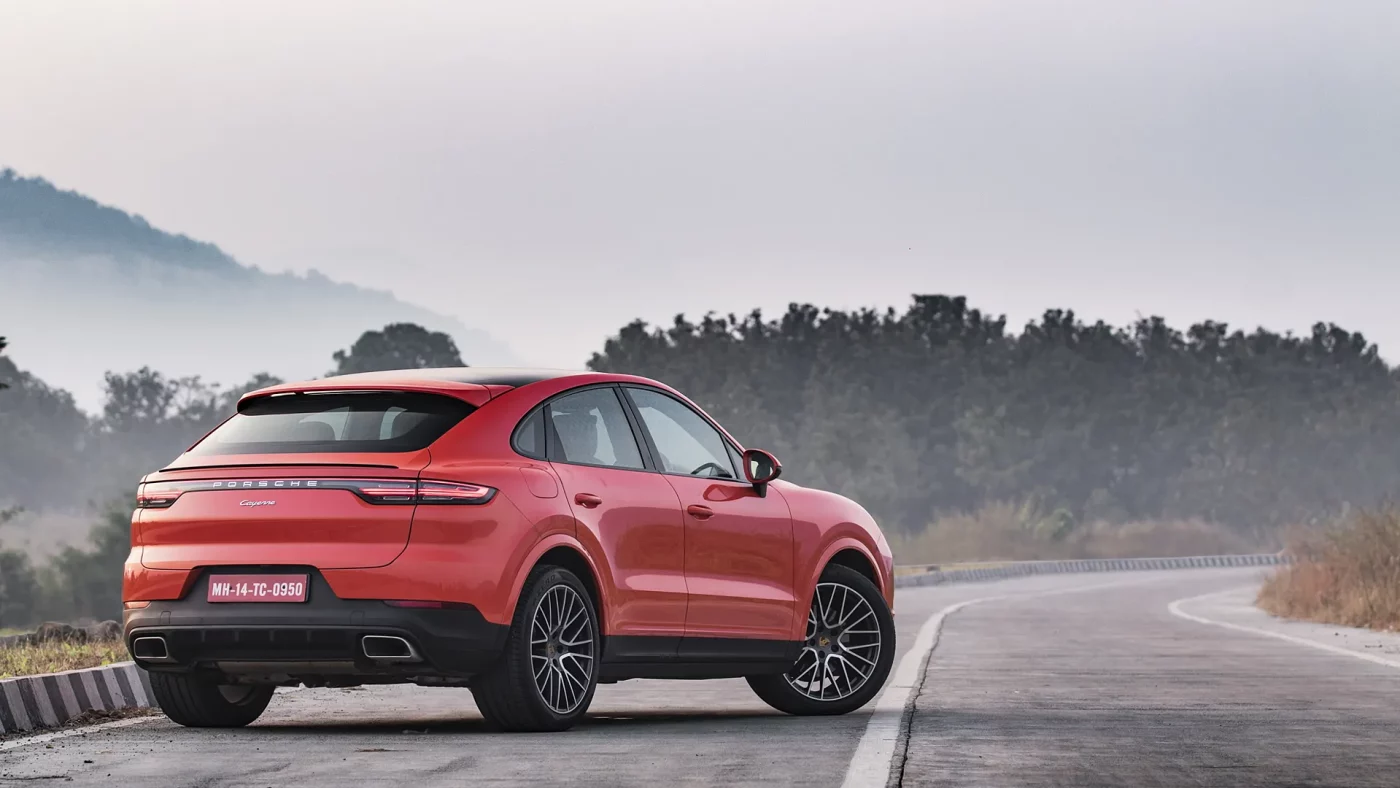
Why's the 3rd Gen Porsche Cayenne a Great Used SUV
The third-generation Porsche Cayenne (9Y0, 2019–present) has quickly established itself as one of the most compelling luxury performance SUVs on the market, and as a used purchase, it offers an unbeatable combination of modern technology, Porsche performance, and practicality. If you’re considering a used luxury SUV with true driving engagement, the 9Y0 Cayenne delivers a remarkable balance of performance, comfort, and versatility. With Porsche’s commitment to quality and innovation, this generation is a great choice for those looking for an SUV that can handle both daily driving and spirited adventures.
One of the standout features of the 9Y0 Cayenne is its advanced powertrain options. Whether you choose the base V6, the V6 turbo in the Cayenne S, or the high-performance Turbo and GTS variants, you’ll find that the engine choices offer both power and efficiency, with the Turbo boasting over 550 hp and delivering truly mind-blowing acceleration for an SUV. For those seeking something more eco-conscious without sacrificing power, the E-Hybrid and Turbo S E-Hybrid models offer plug-in hybrid performance, making them great options for those who want a greener driving experience without giving up Porsche-level thrills. These diverse engine options allow buyers to pick the exact level of performance and efficiency that suits their needs, making the 9Y0 Cayenne incredibly versatile.
Inside, the 9Y0 Cayenne offers a luxurious and high-tech cabin that’s perfect for long-distance trips or city driving alike. The infotainment system is significantly improved over previous generations, with a user-friendly Porsche Communication Management (PCM) system and advanced driver assistance features like adaptive cruise control, lane-keeping assist, and more. The materials throughout are top-notch, with an emphasis on comfort and refinement, and the spacious interior offers ample room for passengers and cargo. Whether you’re navigating daily commutes or embarking on weekend getaways, the Cayenne’s cabin is a blend of practicality and luxury that’s hard to beat.
As a used vehicle, the 9Y0 Cayenne holds its value better than many of its competitors. Porsche’s strong brand reputation, coupled with its impressive engineering and build quality, means these vehicles tend to age well. With relatively low depreciation compared to other luxury SUVs, buying a used Cayenne allows you to get a high-quality, low-mileage SUV at a significant discount compared to new models. Given its combination of modern tech, high performance, and luxury comfort, the 9Y0 Cayenne is an excellent option for those looking for a used luxury SUV that delivers Porsche-level driving dynamics and reliability—a truly great used buy for enthusiasts and those seeking a standout vehicle in the luxury SUV segment.
3rd Gen Cayenne Variants - A Quick Primer for Potential Buyers On The Variants & Specials To Think About.
We already have ultimate guide to the Porsche Cayenne (9Y0) so we don't want to repeat everything here. Instead, we will give you a quick primer and summary about the main third generation Cayenne variants, some of the core model year changes and we will talk about some special editions worth noting as you think about your potential purchase.
Key Variants & Differences
The third-generation Porsche Cayenne is a thoroughly modern SUV that builds on Porsche’s strengths in performance, refinement, and versatility. As with previous generations, Porsche offers a wide range of powertrains and trims to suit everything from casual luxury drivers to serious performance enthusiasts. What sets the 9Y0 apart is its shared MLB Evo platform (used by Audi and Bentley), significantly improved tech and infotainment, and a range of electrified options that expand its appeal even further. Here’s a breakdown of the key variants and differences within the 9Y0 Cayenne lineup:
1. Cayenne (Base)
The entry-level Cayenne is powered by a 3.0L single-turbo V6 producing 335 horsepower and 332 lb-ft of torque. While it’s the least powerful in the range, it still delivers a solid 0–60 time of just under 6 seconds and provides a balanced mix of efficiency, comfort, and agility.
Best for: Daily drivers and luxury SUV buyers who want Porsche quality without high performance costs.
Notable features: Standard adaptive dampers, 8-speed Tiptronic S transmission, AWD, and a well-appointed cabin.
2. Cayenne E-Hybrid
The E-Hybrid builds on the base model by pairing the 3.0L turbo V6 with an electric motor for a combined output of 455 hp and 516 lb-ft of torque. It offers up to 15–20 miles of electric-only range, depending on the year, and can still hit 0–60 in around 4.7 seconds.
Best for: Buyers looking for a greener alternative without sacrificing performance.
Key difference: Plug-in hybrid system with regenerative braking and EV driving modes.
Bonus: Eligible for tax incentives or emissions perks in some regions.
3. Cayenne S
The Cayenne S upgrades to a 2.9L twin-turbo V6, delivering 434 hp and 405 lb-ft of torque. It’s significantly quicker and more responsive than the base model, with 0–60 in about 4.9 seconds, and offers more engaging dynamics thanks to optional Sport Chrono and chassis upgrades.
Best for: Drivers who want more punch without jumping to GTS or Turbo pricing.
Key options: PASM, air suspension, rear-axle steering.
4. Cayenne GTS
The GTS returns in this generation with a 4.0L twin-turbo V8, producing 453 hp and 457 lb-ft of torque. Unlike the 958.2 GTS (which used a V6), the 9Y0 GTS brings back the V8 sound and character enthusiasts craved. It features sportier suspension tuning, standard PASM, active exhaust, and more aggressive styling.
Best for: Enthusiasts who want daily drivability with genuine sports car feel and V8 excitement.
Notable difference: Lower ride height, sharper chassis tuning, and a focus on driver engagement.
5. Cayenne Turbo
The Cayenne Turbo sits near the top of the performance ladder, powered by a 4.0L twin-turbo V8 good for 541 hp and 568 lb-ft of torque. It hits 0–60 in just 3.7 seconds, making it a true super-SUV. It comes loaded with air suspension, PASM, Sport Chrono, and extensive luxury features as standard.
Best for: Buyers who want supercar-level performance in a luxury SUV package.
Key features: Torque vectoring, PDCC (Porsche Dynamic Chassis Control), and massive brakes.
6. Cayenne Turbo S E-Hybrid
The flagship of the 9Y0 range, the Turbo S E-Hybrid combines the Turbo’s 4.0L V8 with an electric motor, producing a staggering 670 hp and 663 lb-ft of torque. It’s the fastest Cayenne ever made, capable of 0–60 in just 3.6 seconds, while still offering plug-in electric capability.
Best for: Tech-forward performance buyers who want the absolute top-tier Cayenne.
Unique appeal: Combines brute force with surprising efficiency and green credentials.
7. Cayenne Coupe Variants
In addition to the standard SUV body, Porsche also offers “Coupe” versions of nearly every variant listed above. These feature a sleeker roofline, more aggressive styling, and in some cases, exclusive features (like the lightweight Sport Package, fixed panoramic roof, or carbon trim).
Best for: Buyers who value style and exclusivity over rear cargo height and traditional SUV shape.
Note: Coupe variants often carry a price premium.
The third-gen Cayenne lineup is incredibly well-rounded, offering everything from luxury cruisers to track-capable super SUVs. Enthusiasts often gravitate toward the GTS for its V8 drama and sporty feel, while buyers looking for tech and performance lean toward the Turbo S E-Hybrid. For most, the Cayenne S or E-Hybrid hits the sweet spot in terms of power, value, and practicality. No matter which variant you choose, the 9Y0 Cayenne offers Porsche-level engineering with genuine versatility, making it one of the most compelling choices in the luxury SUV market today.
Model Year Changes (2019-Present)
It debuted in 2018 as a 2019 model year vehicle with a full redesign, offering increased refinement, improved dynamics, and the integration of electrification across the lineup. While the 9Y0 has remained visually consistent, year-by-year updates have introduced key changes in performance, features, and technology. Here's a breakdown of how the model has evolved since its launch:
2019 – The Launch of the 9Y0 Cayenne
The 2019 model year marked the debut of the third-generation Cayenne, initially offered in three key trims:
Base Cayenne with a 3.0L turbo V6 (335 hp)
Cayenne S with a 2.9L twin-turbo V6 (434 hp)
Cayenne Turbo with a 4.0L twin-turbo V8 (541 hp)
The 2019 Cayenne featured a new 12.3-inch PCM touchscreen, digital gauge cluster, and the latest in chassis control systems. It also introduced rear-axle steering, adaptive air suspension, PDCC (Porsche Dynamic Chassis Control), and an aluminum-intensive chassis that reduced weight and improved handling.
2020 – Introduction of the Coupe & E-Hybrid
The 2020 model year added two major components to the lineup:
Cayenne Coupe variants, available across all core trims, featured a swooping roofline, more aggressive rear styling, and options like the lightweight sport package and carbon roof.
The Cayenne E-Hybrid joined the range, offering 455 hp from a 3.0L turbocharged V6 paired with an electric motor. It delivered up to 17 miles of electric-only range and introduced plug-in hybrid efficiency to the 9Y0 lineup.
These additions widened the Cayenne’s appeal—especially to buyers looking for a stylish alternative or greener performance.
2021 – GTS Returns with a V8
For many enthusiasts, 2021 was the most exciting update yet: the Cayenne GTS returned with a 4.0L twin-turbo V8 producing 453 hp, replacing the V6 used in the previous-gen (958.2) GTS. This move marked Porsche’s return to V8 power for the GTS, winning over purists who missed the visceral character of the earlier naturally aspirated variants.
The GTS also received a sport exhaust system, lowered suspension, and unique styling cues—firmly positioning it between the S and Turbo as the driver’s Cayenne.
2022 – Turbo GT Introduced (Coupe Only)
In 2022, Porsche unveiled the Cayenne Turbo GT, a track-ready performance flagship exclusively available in Coupe form. It featured:
A tuned 4.0L twin-turbo V8 with 631 hp
0–60 mph in 3.1 seconds
Lightweight components, revised suspension geometry, titanium exhaust, and aggressive aero
The Turbo GT became the fastest SUV around the Nürburgring at the time and is now considered one of the most desirable performance SUVs Porsche has ever built.
Also in 2022, the Turbo S E-Hybrid returned, combining the Turbo’s V8 with an electric motor for a combined 670 hp and 663 lb-ft of torque, offering both explosive performance and 15–20 miles of EV range.
2023 – Minor Updates, New PCM Software
While no major mechanical changes occurred in 2023, this model year brought updated Porsche Communication Management (PCM) software with faster response times, improved voice recognition, and better Apple CarPlay/Android Auto integration. Certain option packages were reshuffled, and more features became standard across trims.
2024 – Major Mid-Cycle Refresh (Technically Still 9Y0)
Although still under the 9Y0 designation, the 2024 Cayenne received a significant mid-cycle update:
Redesigned front and rear styling, including new LED lighting and bumper designs
A heavily revised interior with an entirely digital instrument cluster, a new dash layout, and optional passenger-side touchscreen
Improved battery capacity for E-Hybrid models (now offering 20+ miles of electric range)
Revised suspension tuning and retuned steering for better comfort and response
This refresh modernizes the Cayenne dramatically and keeps it competitive with newer rivals from BMW, Mercedes, and Range Rover.
From its launch in 2019 to the substantial 2024 update, the 9Y0 Cayenne has steadily evolved while maintaining its core strengths: driver engagement, luxury, and cutting-edge tech. Enthusiasts tend to gravitate toward the 2021+ GTS and 2022+ Turbo GT, while value seekers may find earlier S or E-Hybrid models to be the perfect blend of power and efficiency. The 2024 refresh, while still technically part of the same generation, represents a notable leap in design and tech, making it a great option for buyers who want the latest without waiting for the next full redesign.
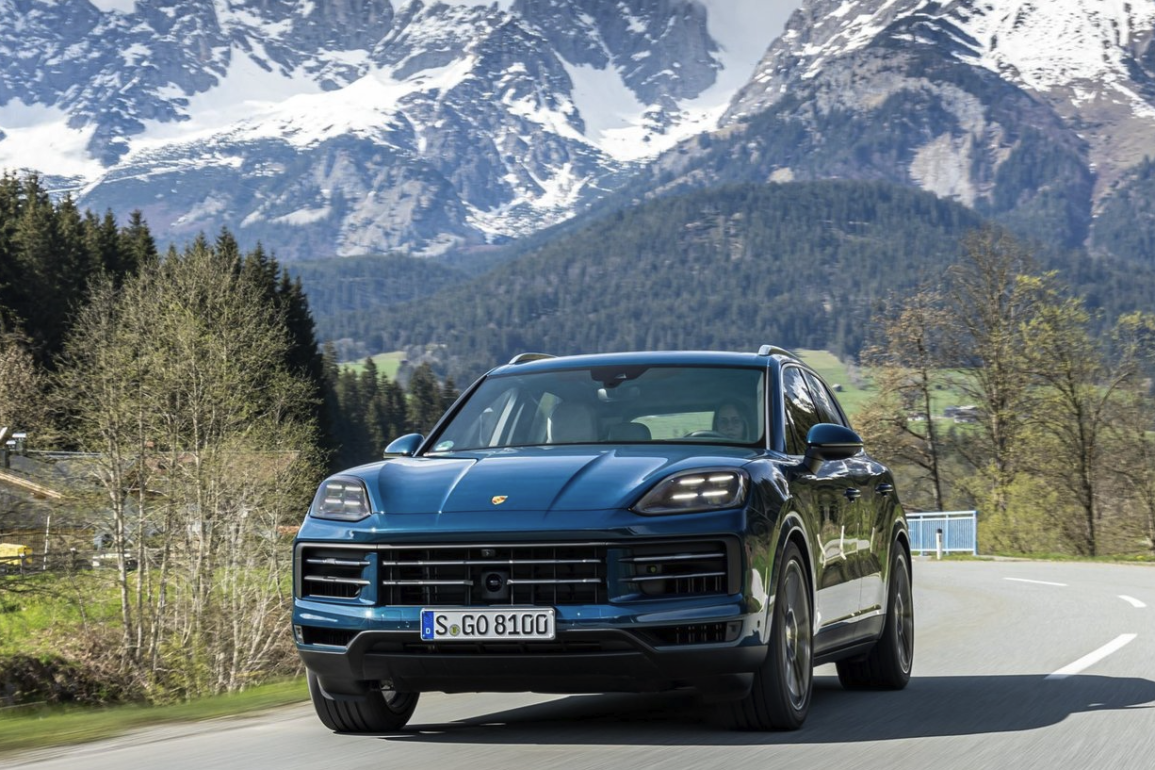
Third Generation Porsche Cayenne Market Value & Pricing
In the used market, the third-generation Porsche Cayenne (9Y0, 2019–present) is beginning to hit its stride in terms of value and accessibility. As early models approach five years old, depreciation has made them increasingly attractive—especially compared to their original sticker prices, which often ranged from $70,000 to well over $150,000 depending on trim and options. Today, you can find well-equipped 2019 and 2020 base models in the $40,000 to $55,000 range, while Cayenne S and E-Hybrid variants from the same years typically trade between $50,000 and $70,000, depending on mileage, condition, and features.
Performance-focused models like the GTS and Turbo still command a premium, with most GTS models (2021+) landing in the $80,000 to $100,000 range and clean Cayenne Turbo models slightly higher. The extremely rare and highly desirable Turbo GT and Turbo S E-Hybrid Coupes are still in short supply and generally sell for well into the six-figure range, even used. Option content plays a significant role in pricing—models with Sport Chrono, air suspension, upgraded audio, and premium packages tend to hold more value. Overall, the 9Y0 Cayenne presents excellent value in the luxury SUV segment, offering cutting-edge tech and top-tier driving dynamics at a fraction of new pricing—especially if you find a well-spec’d, low-mileage example with a clean history.
Note: This page was updated in April 2025 and given the third generation Cayenne is still a young platform, we would recommend you check prices as we'd expect them to move quite a bit in coming years.
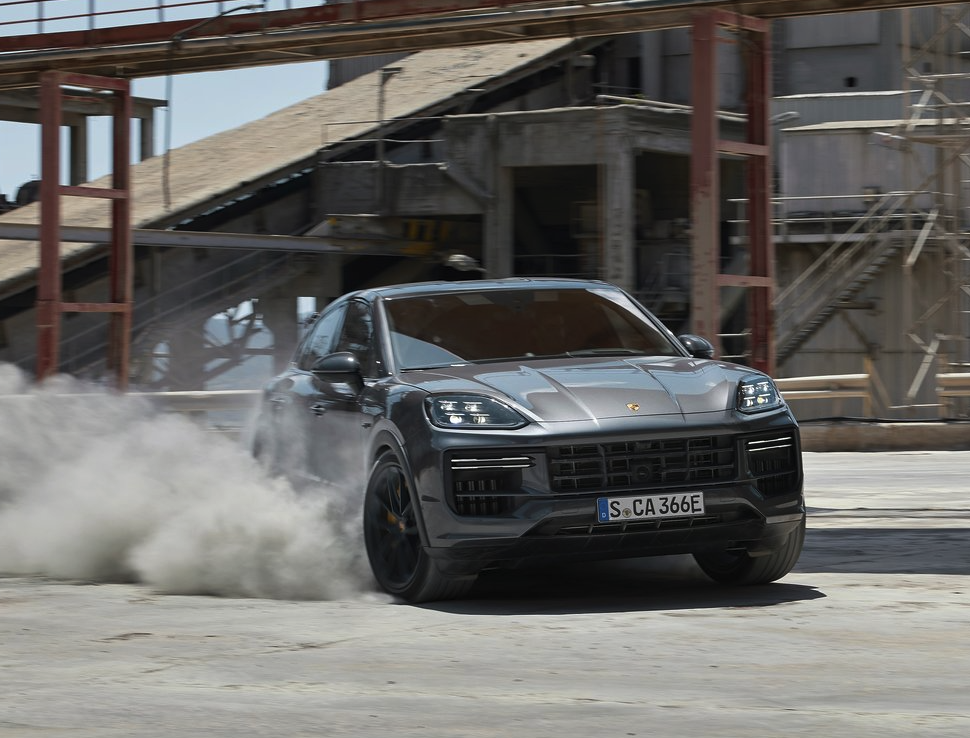
3rd Gen Cayenne Driving Experience & What to Expect
What They Said at The Time
The third-gen Cayenne has garnered widespread acclaim from automotive journalists, who consistently praise its exceptional blend of performance, luxury, and advanced technology. This iteration of Porsche's flagship SUV continues to set benchmarks in the luxury SUV segment, offering a driving experience that is both engaging and refined. According to Edmunds, the 2024 Cayenne
"prioritizes performance and driver engagement, but the SUV still offers loads of luxury and tech and it's highly customizable."
This sentiment underscores the Cayenne's ability to deliver a sports car-like driving experience without compromising on comfort or technological sophistication. The publication further notes that "handling is superb," highlighting the vehicle's precise steering and composed demeanor through corners. MotorTrend echoes this praise, emphasizing the Cayenne's dynamic capabilities:
"The Cayenne S strains at its leash, begging to be hurtled down a twisty road; with the optional high-performance P Zero Corsa tires, it has enough grip to wrinkle the asphalt in corners."
This observation speaks to the SUV's athletic prowess, particularly in the S variant, which offers a compelling balance of power and agility. The interior of the Cayenne has also received commendations. Autocar highlights the significant updates in the latest models, stating,
"Widely updated Cayenne gets a fresh interior and a wider array of plug-in hybrid powertrains, but retains its V8-engined mainstay models for those with more traditional tastes."
This reflects Porsche's commitment to blending modern technology with classic performance elements, catering to a diverse range of preferences.
In summary, the third-generation Porsche Cayenne continues to impress automotive experts with its harmonious fusion of exhilarating performance, luxurious comfort, and cutting-edge technology. It stands as a testament to Porsche's dedication to delivering vehicles that excite drivers while providing the practicality and sophistication expected in the luxury SUV market.What to Expect Today Whether you opt for the base model or the fire-breathing Turbo GT, every Cayenne in this generation exhibits Porsche's signature traits: sharp steering, balanced handling, powerful braking, and road manners that defy its size. It’s a rare SUV that doesn’t just handle well for an SUV—it simply handles well, full stop.
What to Expect Today
The current Cayenne generation came out of the box firing. It delivers one of the most engaging and refined driving experiences in the luxury SUV segment. It’s a vehicle that seamlessly bridges the gap between practical family hauler and enthusiast machine, offering a level of agility, composure, and dynamic feedback that’s remarkably close to what you'd expect from a Porsche sports car. Built on the MLB Evo platform, which it shares with vehicles like the Audi Q7 and Bentley Bentayga, the Cayenne stands apart thanks to Porsche’s meticulous tuning and chassis engineering.
From the moment you take the wheel, the Cayenne feels taut and precise. The steering is beautifully weighted and communicative—surprising for a vehicle of this size—and the suspension tuning manages to be both compliant and sharp, particularly when equipped with optional features like Porsche Active Suspension Management (PASM), air suspension, or rear-axle steering. Even the base Cayenne with its 3.0L turbocharged V6 offers a confident, balanced drive with enough power (335 hp) to make highway merges and passing feel effortless. It doesn’t shout about its performance, but it’s always composed and ready.
Step up to the Cayenne S, and the dynamic character changes notably. With a 2.9L twin-turbo V6 making 434 horsepower, the S feels significantly quicker and more responsive underfoot. It delivers excellent torque throughout the rev range and maintains the same poise and balance of the base model, just with more urgency and sharper throttle response. The GTS variant is where the Cayenne really comes alive for enthusiasts. Powered by a 4.0L twin-turbo V8, the GTS delivers 453 horsepower and a soul-stirring soundtrack, along with sportier suspension tuning and standard performance exhaust. It’s arguably the sweet spot for those who value emotion and control in their driving experience.
The Turbo and Turbo GT push things even further. The standard Cayenne Turbo, with 541 hp, is blisteringly fast and yet composed under hard driving. It combines luxury and brutal acceleration in a way few SUVs can. The Turbo GT, only available in Coupe form, takes it to an entirely new level with 631 hp, track-tuned suspension, and incredible precision—it’s a legitimate high-performance vehicle that happens to seat five and carry a week's worth of luggage. It rides firmer, but if you're looking for an SUV that can genuinely replace a sports car, the Turbo GT makes a strong case.
As a daily driver, the Cayenne excels across all trims. The interior is well insulated, luxurious, and practical, with a high level of craftsmanship and user-friendly tech. It handles city traffic and long highway cruises with equal ease. The air suspension, when optioned, offers a plush ride that adjusts to driving conditions and provides better clearance for rough roads or light off-roading. The E-Hybrid and Turbo S E-Hybrid variants add a layer of efficiency to the mix, offering electric-only driving for short trips and punchy combined output when needed. They’re particularly appealing to buyers in urban environments or those who value green credentials without sacrificing performance.
As a weekend cruiser, the Cayenne—especially in GTS or Turbo trim—is an absolute joy. It’s one of the few SUVs that you’ll actually look forward to driving on a twisty road. Whether you're headed out of town or just taking the long way home, the Cayenne invites spirited driving in a way most of its rivals simply can't.
For potential buyers, the third-gen Cayenne offers a uniquely versatile driving experience. It feels every bit like a Porsche, whether you’re running errands or attacking a mountain pass. Unlike many luxury SUVs that focus solely on comfort or flash, the Cayenne delivers genuine engagement and confidence behind the wheel. Depending on your performance appetite and budget, the base model, GTS, or E-Hybrid may be the ideal fit—but no matter which variant you choose, you’re getting a vehicle that’s far more than just another upscale SUV. It’s a Porsche first—and that shows in every mile.
Getting Real - Costs to Own & Maintenance
While Porsche has made the current Cayenne platform more refined and reliable than ever, maintenance and ownership expenses still reflect its high-end engineering. Whether you're considering an early 2019 model now out of warranty or a more recent example still covered by factory support, it's important to understand what you’re signing up for when it comes to maintenance, parts, and insurance.
Ownership Costs & Maintenance Expectations
Routine maintenance on a third-gen Cayenne is relatively predictable, but not cheap. Expect annual service costs to range from $1,000 to $2,500, depending on the model, mileage, and whether you're using a Porsche dealer or an independent specialist. Base and S models are generally the least expensive to maintain, while GTS, Turbo, and Turbo GT variants—especially those with complex suspension systems or carbon-ceramic brakes—can push costs higher.
Services like oil changes (every 10,000 miles), brake pad/rotor replacement, fluid flushes, spark plug replacement (around 60,000 miles), and suspension inspections are all part of the expected ownership cycle. If you opt for air suspension or PDCC, plan for long-term replacement costs as components age—though these systems have proven more robust than on earlier generations. E-Hybrid and Turbo S E-Hybrid models add complexity, particularly when it comes to battery cooling systems and regenerative braking, so those should be carefully inspected during pre-purchase checks.
Warranty Coverage: In-Warranty vs Out-of-Warranty
One of the most significant distinctions in used 9Y0 Cayennes today is whether or not the car is still under warranty. Porsche offers a 4-year/50,000-mile factory warranty on new Cayennes. As a result, many 2019 and some 2020 models are now aging out of factory coverage, unless extended warranties or CPO (Certified Pre-Owned) plans were purchased.
If you’re considering a 2019–2020 model, it's wise to budget for potential out-of-pocket repairs—or look for examples that have been certified through Porsche’s CPO program, which can add up to 2 years of extended coverage. On the other hand, more recent 2021–2023 models will still be under warranty, which significantly lowers your financial risk in the short term. These are especially attractive if you're looking for peace of mind or are planning a shorter ownership window.
Parts Availability & Pricing
One upside to the 9Y0 Cayenne is that parts availability is strong, thanks to Porsche’s global network and shared architecture with other VW Group models (Audi Q7/Q8, Bentley Bentayga, etc.). Standard service parts like filters, spark plugs, and brake components are readily available from OEM and aftermarket sources. However, genuine Porsche parts still carry a premium, especially for trim-specific items, high-performance brakes, and electronics.
More complex systems—like air suspension components, infotainment modules, hybrid battery parts, or LED matrix headlights—can be costly if they fail out of warranty. That said, Porsche’s overall parts reliability has improved significantly in this generation compared to earlier Cayennes.
Insurance Costs
Insurance rates for the 9Y0 Cayenne vary depending on trim level, your location, driving history, and usage, but you can expect annual premiums between $1,500 and $2,500 for most models. Base and S trims will be on the lower end, while Turbo, Turbo GT, and E-Hybrid variants—with their higher MSRPs and performance capabilities—tend to cost more to insure. Coupe models may also carry a small premium due to their styling and slightly higher values. Buyers opting for financing through Porsche Financial Services or leasing through dealers will likely be required to carry higher coverage limits, which can add to annual costs.
Final Thoughts
The third-gen Cayenne is a relatively safe and rewarding vehicle to own—especially when maintained properly and selected carefully. In-warranty vehicles offer peace of mind, especially for buyers not yet familiar with Porsche ownership. Out-of-warranty examples from earlier model years can still be excellent buys if they have complete service records and a pre-purchase inspection confirms their condition.
If you’re drawn to the Cayenne’s blend of luxury, performance, and daily usability, the ownership experience can be deeply satisfying. Just make sure to factor in real-world maintenance costs, the value of warranty coverage, and the potential for higher repair bills on performance or hybrid models.
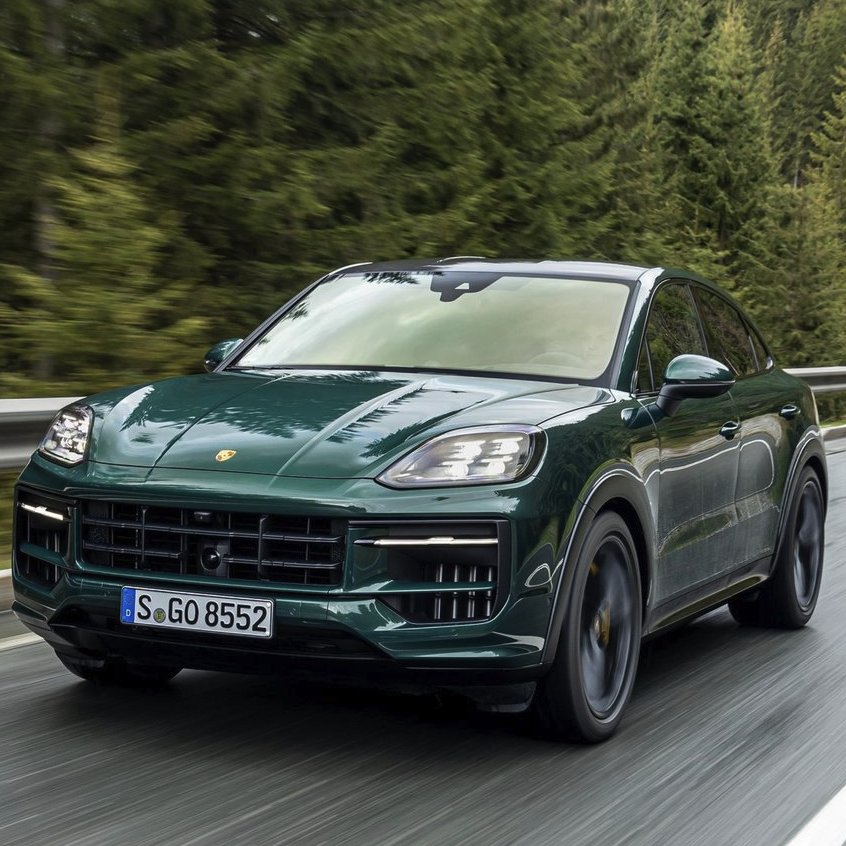
Common 3rd Gen Porsche Cayenne Problems
What Buyers Should Know
Porsche has improved many of the reliability concerns seen in earlier generations, but as these newer models start reaching higher mileage and exit warranty coverage, certain patterns and common issues are beginning to emerge. Here's what buyers should be aware of:
1. Infotainment and Electronics Glitches
One of the most reported annoyances among owners involves the PCM (Porsche Communication Management) infotainment system. Early software versions (2019–2021) occasionally suffer from laggy responses, freezing screens, or Bluetooth connectivity issues. Updates have largely improved these systems, but it’s still a point of frustration for some. Buyers should test the system thoroughly: connect a phone, check CarPlay or Android Auto integration, and ensure the rearview camera, navigation, and digital instrument cluster are functioning smoothly. Software updates are available from Porsche dealers and can resolve most glitches.
2. Air Suspension Components (Optional)
Models equipped with air suspension and PASM (standard on GTS, Turbo, and Turbo GT, optional on others) can develop issues over time. While the 9Y0 air suspension is more robust than previous generations, air strut leaks, compressor wear, or ride height sensor failures are still possible, especially on higher-mileage examples. Common symptoms include a sagging corner after sitting overnight, a “chassis system error” message, or uneven ride height. If you’re buying a used Cayenne with air suspension, it’s wise to have this system inspected during a pre-purchase inspection (PPI).
3. E-Hybrid Battery Cooling and Electrical Systems
The Cayenne E-Hybrid and Turbo S E-Hybrid models are marvels of engineering, but they also introduce additional complexity. Some owners have reported issues with the high-voltage battery cooling system, which, if not properly maintained, can lead to reduced battery performance or error messages. Additionally, hybrid variants rely heavily on software integration between the gas and electric powertrains. Occasionally, owners have experienced abrupt transitions, error codes, or inconsistent EV range, particularly if updates haven't been applied. Porsche has issued TSBs (technical service bulletins) and software updates to address many of these bugs.
4. Transmission and Drivetrain Feel
The ZF 8-speed automatic transmission used in the 9Y0 Cayenne is smooth and reliable in most cases. However, some drivers have noted occasional hesitation or abrupt shifts in lower gears, especially during stop-and-go traffic or when cold. These issues are often software-related and may improve with updated TCU (transmission control unit) programming or an adaptive relearn. There's also minor chatter around driveline vibration or “clunking” at low speeds in certain 2020–2021 models, particularly on Coupe variants. These issues have been mostly resolved under warranty through updated mounts or recalibration.
5. Premature Wear on Brake Rotors and Pads
High-performance variants like the GTS, Turbo, and Turbo GT are equipped with large brakes—some with ceramic composite rotors—that offer exceptional stopping power. However, many owners report premature pad and rotor wear, especially when driven hard or in urban stop-start traffic. Replacement costs can be steep: standard iron rotors and pads run $1,500–$3,000, while ceramic options (PCCB) can exceed $10,000 for a full set. Inspecting brake wear and checking service records is essential—especially if the car has larger wheels or has seen aggressive driving.
6. Random Warning Lights or Software Bugs
As with many tech-laden modern vehicles, the 9Y0 Cayenne occasionally suffers from nuisance warning lights, often related to driver assistance systems (lane keep assist, adaptive cruise, or parking sensors). These alerts are frequently tied to sensor calibration, dirty cameras, or minor electrical gremlins rather than actual faults. Though not critical, these can be frustrating and usually require dealer-level diagnostic tools to reset or address.
Overall, the current Cayenne is significantly more reliable and refined than its predecessors. That said, it remains a high-performance luxury SUV with complex systems—especially in higher trims and hybrid variants. The good news is that most of the common issues are software- or sensor-related, and many can be handled under warranty or updated by a Porsche dealer.
If you're considering a current generation Cayenne:
Always get a pre-purchase inspection, especially if the car is out of warranty.
Confirm the infotainment and electronic systems have the latest updates.
Check for suspension operation, brake wear, and hybrid system diagnostics if applicable.
Favor examples with complete service records and dealership history.
Buying A 3rd Gen Porsche Cayenne FAQs
Here are all the questions we've received from readers considering a current generation Cayenne
What are the top five things to look for when buying a 3rd gen Cayenne?
When buying a current-generation Porsche Cayenne on the used market, it's important to look beyond the badge and really evaluate condition, configuration, and service history. While this generation is more refined and reliable than its predecessors, it's still a high-performance luxury vehicle with complex systems that can be costly to fix if neglected. Here are the top five things to look for, based on expert insight:
1. Remaining Factory Warranty or Certified Pre-Owned (CPO) Coverage Many early 9Y0 models from 2019–2020 are at or near the end of their original 4-year/50,000-mile factory warranty. Cars that are still under warranty or certified by Porsche as CPO (which adds up to two additional years of coverage) are safer bets and can save you thousands in the event of a repair. A well-optioned 2020–2022 Cayenne still under coverage often represents the best mix of value and peace of mind.
2. Full Service Records and Software Updates A documented maintenance history is essential—especially if you're buying a performance trim or hybrid variant. Porsche's recommended service intervals should be followed closely, and hybrid models in particular require consistent attention to their battery cooling systems and software. Make sure any PCM infotainment or drivetrain software updates have been performed, especially for earlier model years (2019–2021) that had minor tech and transmission glitches resolved via updates.
3. Air Suspension and PASM System Health (If Equipped) If the Cayenne you're looking at has air suspension and PASM, test it thoroughly. It should raise and lower without hesitation and sit level when parked. Listen for the compressor and look for any dashboard errors or uneven ride height—suspension repairs are expensive, even though failure rates are lower than in older Cayennes. A sagging corner or a “chassis system failure” message should be a red flag.
4. Option Content and Desirability Porsche’s à la carte options mean two identical trims can differ in value by thousands. Look for models with desirable options such as air suspension, Sport Chrono, adaptive cruise, Burmester or BOSE audio, heated/ventilated seats, and Premium Plus or SportDesign packages. These options improve the ownership experience and help with resale. Coupe versions often carry higher value but may sacrifice some practicality.
5. Brake Wear and Tire Condition High-performance Cayennes—especially the GTS, Turbo, Turbo GT, and E-Hybrids—can go through brakes and tires quickly, and replacements aren't cheap. Ceramic brake-equipped models (PCCB) can cost over $10,000 for a full set. Check for rotor lip wear, pad thickness, and tire condition. Uneven tire wear could also indicate suspension or alignment issues.
Do your homework, insist on a pre-purchase inspection, and make sure the car fits your intended use—whether that’s daily commuting, hybrid efficiency, or weekend performance.
How important are service records and ownership history on such modern cars?
Even in the age of modern, tech-savvy vehicles like the Cayenne, service records and ownership history are absolutely critical—perhaps even more so than in the past. While these SUVs are better built and more reliable than their predecessors, they’re also far more complex, with a dense integration of software, electronics, hybrid systems (in some variants), and high-performance mechanical components. That means one careless owner—or a skipped service—can lead to issues that don’t always show up right away, but could cost thousands to fix down the road.
For buyers, full service records show that the car was maintained by the book, whether at a Porsche dealer or a respected independent specialist. You want to see proof of regular oil changes, brake fluid flushes, software updates, and (especially in hybrids or high-performance trims) attention to systems like air suspension, transfer case fluid, and battery cooling systems. Lack of records usually means guesswork—has the car been driven hard without regular maintenance? Has it missed critical updates or been poorly repaired?
Ownership history also provides valuable insight. A Cayenne with one or two long-term owners, particularly if it’s a Porsche CPO vehicle or still under warranty, suggests it’s been treated well and is less likely to come with hidden issues. On the other hand, vehicles that have changed hands frequently—especially early off-lease returns or auction flips—can signal red flags, especially if records are sparse or the seller can’t explain recent service history.
In short, modern cars may be more durable and smarter, but they're also more expensive to diagnose and repair when something goes wrong. For high-end vehicles like the current Cayenne platform, a clear service and ownership trail is your best protection against expensive surprises—and a strong indicator that you’re buying a well-cared-for example rather than a ticking time bomb.
What are the most sought after 3rd Gen Porsche Cayenne variants?
Desirability varies based on performance, rarity, and overall versatility. While all Cayennes share Porsche’s high standard of engineering, a few standout variants have emerged as the most sought-after by enthusiasts and savvy buyers—whether for their driving dynamics, technology, or long-term value potential.
At the top of the list is the Cayenne GTS, which returned to V8 power in 2021 and struck a near-perfect balance between everyday usability and enthusiast performance. With 453 horsepower, lowered suspension, standard PASM, and a fantastic sport exhaust, the GTS is widely regarded as the "driver’s Cayenne". It’s fast, engaging, and sonically thrilling—yet still practical enough to use daily. This model has become the go-to for those who want performance without stepping into six-figure Turbo or Turbo GT territory.
Then there’s the Cayenne Turbo GT, introduced in 2022 and available only in Coupe form. It’s the fastest and most extreme Cayenne ever built, with 631 horsepower and a Nürburgring record under its belt. With aggressive suspension tuning, carbon roof, titanium exhaust, and incredible track-ready grip, it’s an instant collectible and Porsche’s SUV performance halo. Its rarity, price tag, and raw ability have made it one of the most coveted variants in the lineup—especially among performance-focused collectors.
The Turbo S E-Hybrid also earns a spot on the list, offering a mind-blowing 670 horsepower by combining the Turbo’s V8 with an electric motor. It delivers staggering acceleration while still offering plug-in electric range and city-friendly hybrid flexibility. For buyers looking to merge sustainability with super-SUV performance, it’s one of the most advanced and desirable models—though it’s also the most complex and expensive to own.
Rounding out the list are highly optioned Cayenne S and E-Hybrid models, especially those with Sport Chrono, Premium Plus, and air suspension packages. These hit a sweet spot of performance, comfort, and efficiency, and are often seen as smart long-term buys. Coupe body styles, especially when paired with rare color combinations and performance options, also carry extra desirability due to their more aggressive look and lower production volume.
What are the best 3rd Gen Porsche Cayenne options?
Options and extras can make a huge difference—both in driving experience and resale value. Porsche’s build-to-order philosophy means two Cayennes with the same base trim can differ dramatically in features and price. Whether you're after comfort, performance, or long-term desirability, certain options consistently rise to the top as must-haves or highly desirable extras. Here’s what to look for when evaluating a used recent model year Cayenne.
One of the most impactful features is the air suspension with Porsche Active Suspension Management (PASM). This adjustable system enhances both ride comfort and handling precision by adapting to road conditions and drive modes. It also allows the Cayenne to lower or raise itself, improving entry ease, cargo loading, and off-road clearance. When paired with rear-axle steering and Porsche Dynamic Chassis Control (PDCC), it transforms the Cayenne into a remarkably agile SUV, especially in performance variants like the GTS or Turbo.
The Sport Chrono Package is another standout, especially on Cayenne S, GTS, or E-Hybrid models. It adds additional driving modes (including Sport+), a launch control function, and a dash-mounted stopwatch. But more importantly, it changes the personality of the vehicle, making throttle response sharper and the transmission more aggressive. It’s one of the most valuable performance upgrades, both for driving fun and resale desirability.
On the luxury side, the Premium Package Plus is a must-have for most buyers. It typically includes ventilated front seats, panoramic roof, ambient lighting, adaptive headlights, and four-zone climate control, depending on trim and year. This package significantly enhances the day-to-day comfort of the Cayenne and is nearly expected in the used market. Additionally, BOSE or Burmester audio systems elevate the interior experience—especially for those who value premium sound.
In terms of usability, the towing package is a hidden gem. It’s factory-integrated, includes a trailer sway control module, and enables up to 7,700 pounds of towing capacity. For those who plan to tow or want added resale flexibility, it’s a great investment. Also worth noting is the Surround View Camera system and Adaptive Cruise Control, both of which make the Cayenne far easier to live with in urban environments or on long highway drives.
Finally, color and trim choices—though subjective—can heavily influence desirability. Special colors like Chalk, Carmine Red, Jet Green Metallic, or Paint-to-Sample options, as well as unique interior finishes (like two-tone leather or extended leather dashboards), are often favored by collectors and enthusiast buyers.
Should I just buy a new Cayenne vs a slightly used one?
Whether you should buy a new Porsche Cayenne or a slightly used one depends on your priorities—financial, emotional, and practical. Both choices come with distinct pros and cons, and the best answer depends on how you weigh value, customization, warranty coverage, and depreciation. Let’s break it down from an expert perspective.
The Case for a Slightly Used Cayenne
From a value standpoint, slightly used is hard to beat. The third-generation Cayenne (9Y0) has already begun to experience its initial depreciation curve, especially for early models from 2019–2021. In many cases, you can get a well-optioned used Cayenne with under 30,000 miles for 20–30% less than its original MSRP. That’s significant savings—often enough to bump you into a higher trim (like S, GTS, or even E-Hybrid) for the price of a new base model.
Many of these used Cayennes are still under factory warranty or available through Porsche’s Certified Pre-Owned (CPO) program, which extends coverage up to 6 years with unlimited mileage. You also avoid the wait time of ordering a new car and often get more for your money in terms of options and extras, since first owners tend to spec them generously.
The Case for a New Cayenne
Buying new has its own set of advantages. First and foremost, you get to spec the car exactly how you want it—from exterior color to performance options to interior trim. You also benefit from the latest updates, especially important in a tech-forward vehicle like the Cayenne. The 2024 refresh, for example, brought a new digital cockpit, enhanced infotainment, and sharper styling—none of which you'll find on 2019–2022 models.
A new Cayenne also comes with zero history, which some buyers find worth the premium. There's no guesswork about how the vehicle was treated, no wear-and-tear surprises, and full warranty coverage from day one. If you plan to keep the car long-term or want the peace of mind that only brand-new offers, this route makes sense—just know you’ll be paying for it.
Our Final Verdict
If you're looking to maximize value, don't mind a car that's a couple years old, and want to stretch your dollar into a higher trim or better options, a slightly used or CPO Cayenne is a fantastic choice. On the other hand, if you want the latest tech, a car built to your tastes, and full warranty with no prior ownership, a new Cayenne offers unmatched peace of mind and personalization.
Ultimately, it comes down to this: Buy used if you want more Cayenne for your money. Buy new if you want the Cayenne that's 100% yours from day one. Both paths lead to a world-class SUV—just with different roads to get there.


